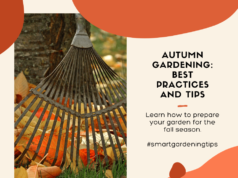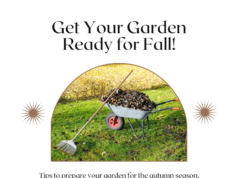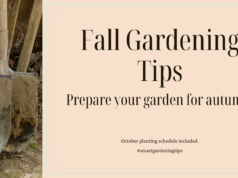
Are you looking to add some color and life to your garden this spring? Look no further than spring perennials! These beautiful and low maintenance plants are the perfect addition to any garden, offering a range of benefits that make them a popular choice for gardeners across the country.
In this comprehensive planting guide, we will explore everything you need to know about spring perennials. From planting tips to the benefits they bring to your garden every year, we’ve got you covered. But first, let’s dive into what exactly spring perennials are and why they should be on your gardening radar.
Key Takeaways:
- Spring perennials are a low maintenance option for your garden, providing a sustainable and long-lasting source of beauty.
- They are known for their vibrant blooms that come back year after year, making them a popular choice for gardeners across the country.
- By incorporating native species into your garden, you can create a connection to the land and contribute to the ecosystem.
- Proper care is necessary to ensure the health and longevity of your spring perennials, including watering, fertilizing, pruning, and dividing.
- Consider adding long blooming spring perennials to extend the beauty and vibrancy of your garden throughout the season.
Why Choose Spring Perennials for Your Garden
When it comes to choosing plants for your garden, spring perennials offer a range of benefits that make them a popular choice for many gardeners. Unlike annuals, which need to be replanted each season, perennial plants come back year after year. This provides a more sustainable and low maintenance option for your garden.
Spring perennials are also known for their vibrant blooms that bring life and color to your spring garden flowers. From perennial flowers that bloom in bold hues to those that add a touch of elegance with delicate pastels, there is a wide variety of options to choose from.
Other benefits of planting spring perennials include:
- Cost-effectiveness: Since they come back year after year, you save money on replacements that annuals require.
- Longevity: Perennials can live for several years or more.
- Drought-resistance: Many spring perennials require minimal watering.
Overall, spring perennials are a smart choice for gardeners who want to enjoy beautiful blooms year after year without the hassle of replanting. The sustainability and low maintenance benefits make these plants a must-have in any garden.
Getting Started: Planting Spring Perennials
Spring perennials are a great addition to any garden, providing vibrant blooms year after year. To get your perennials off to a healthy start, it’s important to follow a few simple steps.
Choose the Right Location
Before planting, it’s important to select the right location for your spring perennials. Look for an area with well-drained soil and plenty of sunlight. You should also consider the mature size of the plants and ensure they have enough space to grow.
Prepare the Soil
Preparing the soil is an essential step in ensuring your spring perennials thrive. Begin by removing any weeds and rocks from the area. Then, add organic matter such as compost or aged manure to improve soil fertility and drainage.
Designing a Perennial Garden
A well-designed perennial garden can be a stunning addition to your backyard. Consider color schemes, plant heights, and blooming periods when selecting your plants. Low maintenance perennials are great options for busy gardeners.
Planting Your Perennials
When planting your perennials, be sure to dig a hole large enough to accommodate the entire root system. Gently tamp down the soil around the plant and water thoroughly.
Perennial Gardening Tips
- Water regularly, especially during dry periods.
- Deadhead spent blooms to encourage new growth.
- Divide plants as needed to prevent overcrowding.
- Fertilize in the spring and fall with a balanced fertilizer.
With these tips and techniques, you can ensure your spring perennials thrive for years to come, providing beauty and joy to your garden.
Top Spring Perennials for Your Garden
Spring is the perfect time to add some fresh and vibrant colors to your garden with stunning spring flowering plants. Here are some of the best perennials for spring that will add beauty and elegance to your garden:
| Perennial | Color | Bloom Time |
|---|---|---|
| Tulips | Various | Early to mid-spring |
| Daffodils | Yellow, White | Early to mid-spring |
| Crocus | Purple, White, Yellow | Early spring |
| Hyacinths | Pink, Purple, Blue | Mid-spring |
| Lilacs | Purple, White, Pink | Mid to late spring |
| Iris | Various | Mid to late spring |
These spring blooming perennials not only add color to your garden but also attract pollinators like bees and butterflies. When designing your perennial garden, consider grouping plants together based on their color and bloom time to create an eye-catching and diverse display.
Native Spring Perennials: A Connection to the Land
Spring is a time of renewal, and what better way to celebrate the season than by incorporating native spring perennials into your garden? These plants are well-suited to your local environment and require minimal maintenance, making them a great choice for busy gardeners.
When you choose native spring perennials, you are not only enhancing the beauty of your own garden, but you are also connecting to the land around you. These plants have evolved to thrive in your region, and by choosing them, you are supporting the local ecosystem.
Native spring perennials also offer a range of benefits, including:
- Requiring less water and fertilizer
- Resisting pests and diseases
- Attracting pollinators and other beneficial insects
- Providing important food and habitat for wildlife
Some popular low maintenance spring perennials that are native to North America include:
| Flowering Plant | Bloom Time | Height |
|---|---|---|
| Bloodroot | Early Spring | 6-10 inches |
| Butterfly Weed | Summer | 2-3 feet |
| Columbine | Spring | 1-3 feet |
| Goldenrod | Fall | 2-3 feet |
| Wild Geranium | Spring | 1-2 feet |
Add these beautiful garden blooms to your landscape to create a vibrant and engaging outdoor space that will bring enjoyment for years to come.
Caring for Your Spring Perennials
Proper plant care is essential for ensuring the health, longevity and blooming schedule of your spring perennials. By following a few simple tips and techniques, you can easily keep your plants thriving throughout the season.
Watering Your Spring Perennials
Consistent and deep watering is vital for the growth and development of your spring perennial flowers. When watering your plants, make sure the water goes deep into the soil and reaches the roots, rather than just wetting the surface.
One effective way to ensure perfect water saturation is to use a soaker hose or drip irrigation system, which slowly and deeply waters plants at the root zone. This helps reduce water loss caused by evaporation and ensures your plants get the water they need, without waterlogging the ground.
Fertilizing Your Spring Perennials
Regular fertilizing throughout the growing season can provide your plants with the necessary nutrients for strong growth and vibrant blooms. Before applying any fertilizer, make sure to read the instructions carefully and apply only the recommended amount.
One natural way to fertilize your plants is to use compost, which conditions the soil and provides essential nutrients. You can also use a balanced fertilizer or slow-release fertilizer specifically formulated for perennials.
Pruning and Deadheading Your Spring Perennials
Pruning and deadheading are two techniques used to promote healthy growth and prolonged blooming periods. Pruning involves cutting back some of the plant’s foliage and stems to encourage bushier growth and reduce its overall size.
Deadheading, on the other hand, involves removing spent flowers to encourage further blooming and prevent the plant from going to seed. It’s best to perform deadheading regularly, at least once a week, to keep your plants in top blooming condition.
| Perennial Flower Care | Technique | Timeline |
|---|---|---|
| Watering | Deep watering | Weekly, or as needed |
| Drip irrigation | 2-3 times per week, depending on weather | |
| Fertilizing | Compost | Twice per year – at the beginning of the season and mid-way through. |
| Slow-release fertilizer | Once a month during growth period | |
| Pruning and Deadheading | Prune back stems | Early spring before blooming |
| Deadheading spent blooms | Weekly or as needed |
Dividing Your Spring Perennials
As your perennials mature, they may become overcrowded and need to be divided to maintain their health and optimize their blooming capacity. Dividing a plant is the process of removing the plant from the soil, separating it into smaller sections, and replanting them once again.
The best time to divide most perennials is in early spring or fall, when the weather is cooler and the plants are dormant. You should divide the plants every three to five years, or when they have become overgrown or when their flowering has declined.
Enjoying the Long Blooming Spring Perennials
Spring perennials are a delight in any garden for various reasons, and one of them is their long blooming period. The vibrant colors of blooming perennials can bring a lot of color to your landscapes, offering a dazzling view for your spring garden. Regardless of the size of your yard or the type of plants you prefer, colorful spring perennials can bring you joy and vibrant colors for months.
| Perennials | Main Characteristics |
|---|---|
| Tulip | One of the most popular perennial flowers, tulips are available in many colors and types. They need well-drained soil and lots of sun. |
| Daffodil | A classic spring perennial flower, daffodils come in a wide range of colors and sizes. They are perfect for naturalizing in a lawn or meadow. |
| Hyacinth | Hyacinths are known for their fragrant blooms in shades of pink, blue, and white. |
Low maintenance spring flowers can be a great option if you are short on time and want to add easy and beautiful blooms to your garden. You can achieve a vibrant spring garden with low maintenance perennials such as iris, daisy, and coneflower. Consider also companion planting that pairs compatible flowers to add a splash of color and capture the attention of those who pass by your garden.
Some of the colorful spring perennials you can plant in your garden include dahlia, foxglove, and phlox. These vibrant flowers come in all shapes, colors, and sizes, making them perfect to add personality and charm to any garden. A vibrant spring garden includes several combinations of colorful flowers that can create a picturesque view, taking the breath away from your family and friends.
Make sure your garden continues blooming in different seasons by planting different varieties of flowers, such as summer and fall perennials. With vibrant spring gardens, you will be able to create an inviting and vibrant outdoor space for everyone to enjoy!
Designing with Spring Perennials: Ideas and Inspiration
Designing a spring perennial garden can be an exciting undertaking, allowing you to showcase your creativity and style. With so many options to choose from, it’s important to consider factors such as color schemes, companion planting, and overall garden layout to create a visually appealing and cohesive look.
Add pops of contrasting colors to your garden by pairing warm hues, such as oranges and yellows, with cool blues and purples. Use Salvia nemorosa, Geranium, and Aquilegia to create a balanced and harmonious look.
“Gardening is a matter of your enthusiasm holding up until your back gets used to it” – Unknown
Companion planting can also be an effective way to enhance the health and growth of your spring perennials. Use Allium to repel pests and improve the soil, and plant Phlox near your vegetables to attract pollinators like bees and butterflies.
| Plant | Companion |
|---|---|
| Daffodils | Tulips, Hyacinth, Crocus |
| Hydrangea | Azalea, Hosta, Ferns |
| Dahlia | Yarrow, Cosmos, Nasturtium |
| Pansy | Violas, Dianthus, Snapdragons |
Lastly, consider the layout of your garden to optimize not only its aesthetic appeal but also its functionality. Use low growing plants such as Heuchera and Creeping Phlox as ground covers, and plant taller varieties such as Peonies and Iris in the back of the garden to create depth and dimension.
Embrace your inner designer and experiment with different combinations of plants and layouts to create a stunning and unique spring perennial garden.
Must-Have Spring Perennials for Every Gardener
Whether you’re a seasoned gardener or just starting, there are some spring perennials that you simply must have in your garden. These plants are known for their reliability, hardiness, and stunning beauty. Here are some of the top spring perennials that every gardener should consider:
| Plant Name | Description |
|---|---|
| Lilacs | The fragrant blooms of lilacs make them a favorite among many gardeners. These plants come in a range of colors and are perfect for creating a focal point in your garden. |
| Tulips | Tulips are a classic spring perennial that never goes out of style. With their vibrant colors and unique shapes, they add a cheerful vibe to any garden. |
| Daffodils | Nothing says spring quite like the sunny blooms of daffodils. These low maintenance perennials come in a variety of shades and are perfect for naturalizing in large numbers. |
| Hellebores | Also known as Lenten Roses, Hellebores are a long blooming perennial that provides color and interest throughout the entire spring season. They come in a variety of colors and can tolerate shade, making them perfect for difficult areas in your garden. |
| Pasque Flower | This unique perennial is known for its fuzzy, fern-like foliage and delicate blooms that appear in early spring. It prefers well-drained soil and can add a unique and interesting element to your garden. |
These are just a few of the must-have spring perennials that every gardener should consider. Whether you’re looking for vibrant color or low maintenance options, there’s a spring perennial out there for you. Happy planting!
Extending the Beauty: Long Blooming Spring Perennials
Spring is a time for new beginnings and fresh growth in your garden. If you want to keep the vibrant colors and beautiful blooms going for an extended period of time, consider adding long blooming spring perennials to your garden. These hardy plants continue to produce flowers throughout the season, making them a valuable addition to any garden.
One of the top-performing long blooming spring perennials is the Geranium Rozanne. This hardy plant produces gorgeous blue-purple flowers that bloom from late spring to early fall. It also has a long lifespan, coming back year after year to grace your garden with its beauty.
Another hardy perennial that will enhance your garden is the Coreopsis Moonbeam. It is a low maintenance plant that produces masses of small, bright yellow flowers that bloom from early summer until fall. It offers a long blooming period, making it one of the best long blooming spring perennials.
If you are looking for a plant that will bloom in various shades of pinks and purples from early summer to fall, the Gaura lindheimeri would be a great addition to your garden. With its delicate wand-like flowers and long life span, it is ideal for a low maintenance garden.
By choosing long blooming spring perennials such as these, you can maintain a beautiful and vibrant garden throughout the season. They will continue to provide spectacular blooms, year after year.
FAQ
Q. Why should I choose spring perennials for my garden?
A. Spring perennials are a great choice for your garden because they come back year after year, providing a sustainable and low maintenance option. They also offer vibrant blooms that bring life and color to your spring garden.
Q. How do I get started with planting spring perennials?
A. To get started with planting spring perennials, it’s important to select the right location and prepare the soil. Our comprehensive planting guide will walk you through the process and provide tips on designing a perennial garden and selecting low maintenance varieties.
Q. What are some of the top spring perennials for my garden?
A. Some of the best spring perennials include varieties known for their stunning blooms and ability to create a diverse and colorful garden. Discover our top recommendations and learn how to add beauty and elegance to your outdoor space.
Q. What are native spring perennials and why should I consider incorporating them into my garden?
A. Native spring perennials are plants that are perfectly adapted to your region and require minimal maintenance. By incorporating native species into your garden, you can support the local ecosystem and enjoy the benefits of low maintenance flowers and garden blooms.
Q. How do I care for my spring perennials?
A. Proper care is essential to ensure the health and longevity of your spring perennials. Our gardening tips and techniques will guide you through watering, fertilizing, pruning, and dividing your plants to keep them thriving and beautiful.
Q. What are some long blooming spring perennials that require low maintenance?
A. Enjoy the beauty of a vibrant spring garden with long blooming perennials that require minimal upkeep. Discover our recommendations for colorful and low maintenance options that will provide continuous blooms throughout the season.
Q. Can you provide ideas and inspiration for designing a spring perennial garden?
A. Absolutely! We have a range of inspiring design ideas for your spring perennial garden. From color schemes to companion planting, you’ll find the inspiration you need to create a garden that reflects your personal style and vision.
Q. What are some must-have spring perennials every gardener should consider?
A. There are certain spring perennials that no garden should be without. These timeless favorites have proven to be reliable performers and will bring beauty and charm to your garden year after year. Find out which varieties are must-haves for every gardener.
Q. How can I extend the blooming period of my spring perennials?
A. If you want to prolong the blooming period in your garden, consider adding long blooming spring perennials. These plants continue to produce flowers throughout the season, ensuring a vibrant and beautiful garden for an extended period of time.
Conclusion
Congratulations on reaching the end of our complete planting guide for spring perennials! By now, you should have a solid understanding of the benefits of growing these low maintenance plants and how to get them off to a healthy start in your garden.
Remember, selecting the right location, preparing the soil, and providing proper care are all essential for the longevity and beauty of your spring perennials. With so many stunning varieties to choose from, we hope you feel inspired and ready to create a colorful and vibrant garden.
Thank you for joining us on this journey, and happy gardening!
















